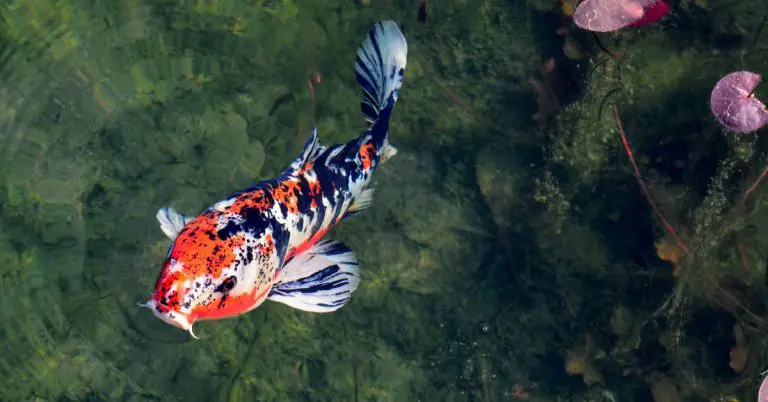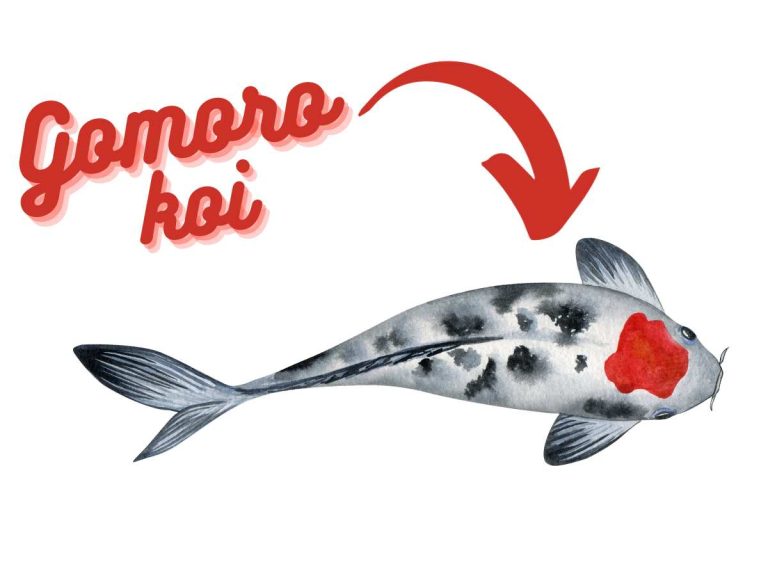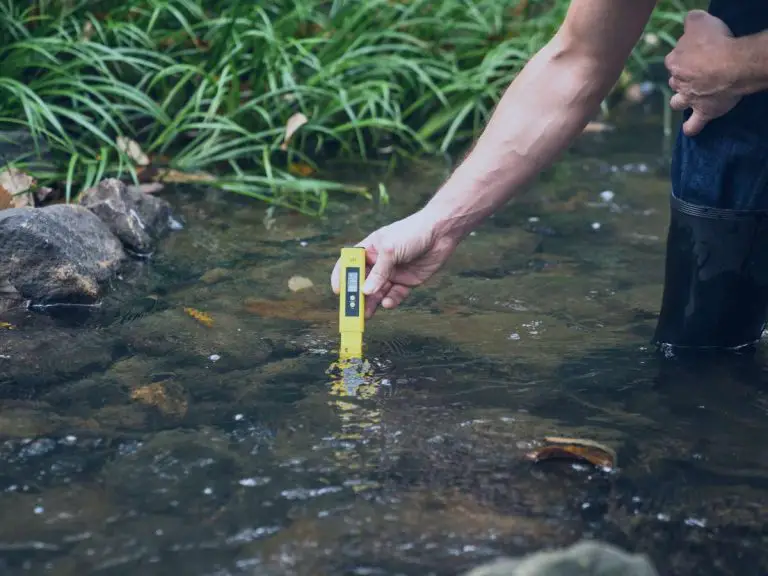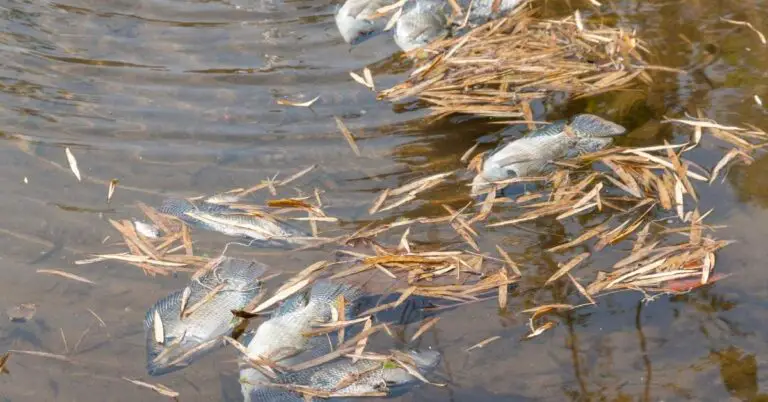Discover the Best Microscopes for Koi Ponds: Enhance Your Understanding and Explore the Hidden World Within
When it comes to understanding the intricate world of koi ponds, nothing beats the power of a microscope. These extraordinary devices allow us to dive deeper into the hidden secrets of water quality, koi fish health, and overall ecosystem dynamics.
This article explores the top microscopes specifically designed for observing and studying koi ponds. If you’re a koi pond enthusiast or a professional in the field, these microscopes can enhance your understanding and observation of these aquatic environments. By closely examining the water, plant life, and fish within your koi pond, you can gain valuable insights into its health and ecosystem.
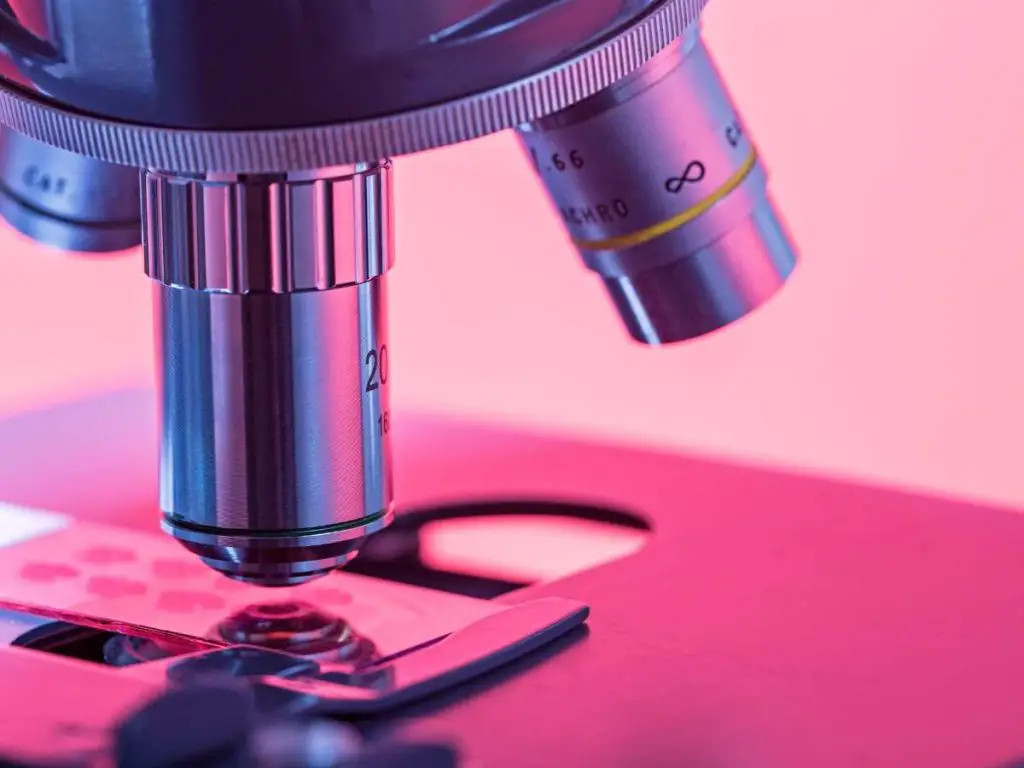
Importance of using a microscope for studying koi ponds
A microscope can be an indispensable tool is maintaining the health of your koi fish. Here’s why:
Early Detection of Parasites: Koi fish, like any other aquatic species, are susceptible to various external parasites. These parasites, if left untreated, can cause significant harm to the fish, leading to bacterial infections or even death. Microscopes enable the identification of harmful parasites and bacteria in the water that can adversely affect fish health, helping in early diagnosis and treatment of diseases such as the white spot disease caused by Ichthyophthirius multifiliis. Detecting these parasites early on helps ensure timely treatment and minimizing potential damage.
Accurate Identification: Not all parasites are created equal. Different parasites require different treatments. By examining a mucus sample from the koi under a microscope, one can accurately identify the specific parasite causing the issue. This precision ensures that the correct treatment is applied, avoiding the pitfalls of ‘shotgun’ treatments that can be wasteful and expose koi to unnecessary chemicals.
Maintain Health and Balance: Microscopes play a crucial role in maintaining the health and balance of koi ponds by allowing for the detailed examination of water, soil, and aquatic life.
In terms of soil quality, microscopes assist in detecting excess nutrients or fecal bacteria that could leach into the pond, promoting unwanted algae growth and potentially harming fish. This insight aids in the management and prevention of nutrient buildup and algae blooms, contributing to overall pond health.
Moreover, microscopes facilitate the identification of aquatic plants, including differentiating between similar species, ensuring the right plants are chosen to maintain ecological balance.
And utilizing a microscope to inspect the water in your koi pond is essential for identifying both harmful and beneficial microscopic organisms, allowing you to ensure optimal water quality and take timely action against potential threats, thereby safeguarding the health and vitality of your koi fish and contributing to a balanced and thriving aquatic ecosystem.
Ultimately, understanding and monitoring these microscopic elements are paramount as they directly impact the health of the fish, the quality of the water, and the balance of the pond ecosystem, ensuring a thriving and healthy pond environment.
Professional Care: For those serious about koi keeping, a high-quality microscope is not just a tool but an investment. Professional-grade microscopes, like the Brunel SP55d, offer clear and comfortable viewing, allowing for detailed examination. Some even come with digital cameras, enabling the sharing of images and videos for expert opinions or record-keeping.
Ease of Use: Modern microscopes are designed with user-friendliness in mind. Features like a mechanical stage make scanning slides for parasites a breeze. Adjustable lights provide the best contrast, ensuring that even the smallest parasite, like Costia, is easily visible.
Education and Awareness: Using a microscope not only helps in the immediate care of koi but also educates the pond owner. Over time, they become adept at identifying various parasites and understanding their behaviors, leading to better overall pond management.
In short, a microscope is not just a tool but an essential companion for every koi pond owner. It ensures the health and longevity of the koi, adds to the pond owner’s knowledge, and ultimately enhances the joy of koi keeping.
What is the best microscope for koi?
The best microscope for koi ponds should offer clear and comfortable viewing, preferably with binocular eyepieces to reduce eye strain. It should feature multiple objective magnifications, allowing for detailed examination of various parasites, with an adjustable light to provide optimal contrast. Additionally, a mechanical stage is highly beneficial, enabling smooth and precise scanning of slides for accurate parasite identification.
For koi pond applications, a microscope should ideally have a magnification range starting from 40x to 400x. The lower magnification (40x to 100x) is useful for getting an overview and identifying larger parasites, while higher magnifications (100x to 400x) are essential for spotting and identifying smaller parasites and microorganisms in detail. Some advanced users might also benefit from microscopes that can go up to 1000x, but for most koi pond enthusiasts, the 400x upper limit is sufficient.
Factors to consider when choosing a microscope for koi ponds
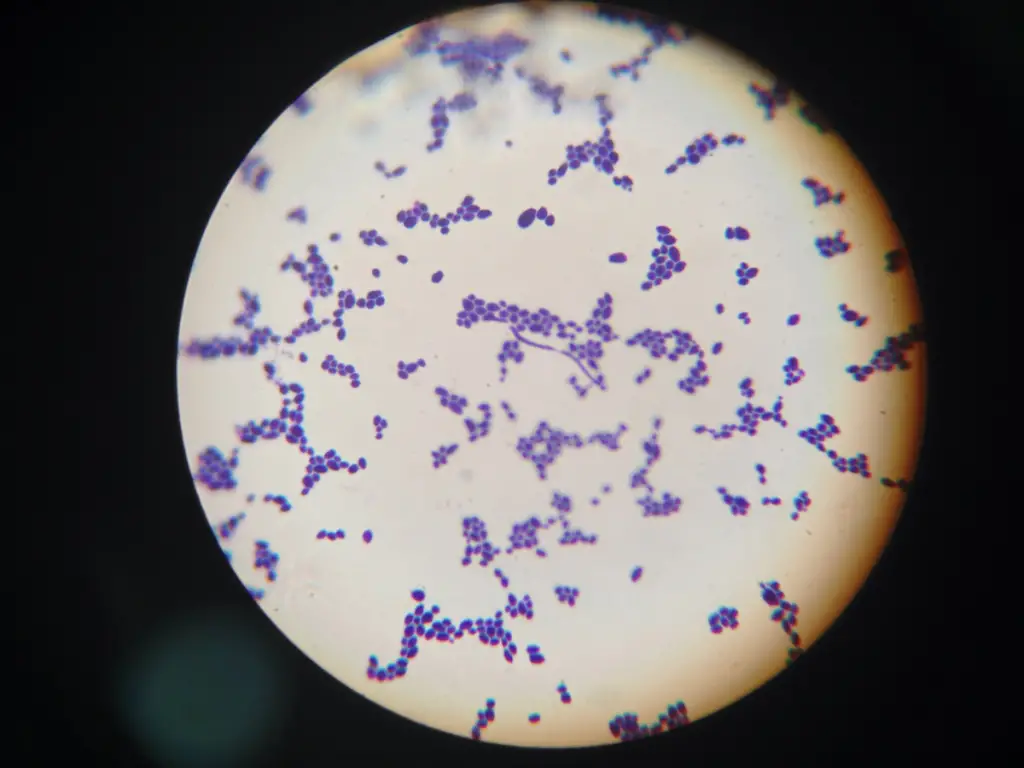
Selecting the right microscope for koi pond applications is crucial, not just for the health of your fish but also for ensuring ease of use and accuracy in your observations. Here are some key factors to consider:
- Magnification Range: As previously mentioned, the ideal magnification range for koi pond applications is between 40x and 400x. This range allows for the identification of both larger and smaller parasites. While some microscopes offer up to 1000x magnification, it’s essential to note that for most koi pond applications, 400x is sufficient. Higher magnifications can be more challenging to work with and might not provide additional benefits for standard pond checks.
- Binocular vs. Monocular: Binocular microscopes, which have two eyepieces, tend to be more comfortable for extended use compared to monocular ones. They reduce eye strain and provide a more immersive viewing experience. If you anticipate spending a lot of time examining samples, a binocular microscope might be a worthy investment.
- Lighting: Proper illumination is crucial for clear viewing. Many modern microscopes come with built-in LED lighting, which provides bright and even illumination. Adjustable lighting allows you to control the contrast, making it easier to spot and identify parasites.
- Mechanical Stage: A mechanical stage is a feature that lets you move the slide smoothly in both the X and Y directions. This feature is invaluable when scanning slides for parasites, as it provides precision and ease of movement.
- Ease of Use: Especially for beginners, the microscope should be user-friendly. Features like coarse and fine focus knobs, easy-to-change objective lenses, and straightforward setup procedures can make the microscopy experience much more enjoyable and efficient.
- Build Quality: Given that this is an investment in the health of your koi, it’s essential to choose a microscope built to last. Opt for models with a sturdy build, preferably with a metal framework. This ensures durability and stability during use.
- Digital Capabilities: Some microscopes come equipped with digital cameras or have the option to attach one. This feature can be beneficial for those who wish to document their findings, share images with fellow enthusiasts, or seek expert opinions online.
- Portability: If you anticipate needing to move the microscope frequently or use it in different locations, consider its weight and size. Some models are designed to be more portable, with cordless operation options, making them suitable for fieldwork.
- Price and Warranty: While it’s tempting to go for the cheapest option, it’s essential to consider the microscope’s quality and features. Investing in a slightly more expensive model with better optics and build quality can pay off in the long run. Additionally, check for warranties or guarantees, which can provide peace of mind.
- Reviews and Recommendations: Before making a purchase, it’s always a good idea to check reviews from other koi enthusiasts or professionals in the field. Their experiences can provide insights into the microscope’s performance in real-world scenarios.
Choosing the right microscope for koi pond applications requires careful consideration of various factors. By prioritizing your needs and understanding the features that matter most, you can select a tool that will serve you well for years to come, ensuring the health and well-being of your koi.
What magnification is needed for koi parasites?
A magnification of 400 times is recommended for identifying most koi parasites. However, with experience and quality optics, 100x can be sufficient for all parasites.
What magnification do you need to see flukes?
At 100x magnification, you can easily see the largest koi parasite, which is the fluke, and it will still fit in view.
Top microscopes recommended for studying koi ponds
Note: The information provided below is based on the product details from Amazon and provided to the best of my ability.
My Pick: Swift Compound Monocular Microscope SW200DL
If I were pressed to name a specific best microscope for koi ponds, it would be the Swift Compound Monocular Microscope. Among the myriad of options available in the market, it’s personal favorite and top recommendation. Here’s why:
- Versatile Magnification Settings: This microscope boasts a range of magnification settings, from 40X to 1000X. Such versatility ensures that I can observe everything from larger organisms to the minutest details with precision.
- Dual Illumination System: The dual illumination feature is a game-changer. It allows me to examine both transparent and solid specimens with ease. The LED lights provide bright illumination without generating heat, ensuring the safety of live specimens, which is crucial when examining koi samples.
- Durable Build: The metal arm and base of the Swift microscope speak volumes about its durability. It’s a tool built to last, ensuring that I don’t have to constantly worry about wear and tear.
- Portability Features: The carrying handle and cordless capability make this microscope a perfect companion for field experiments. Whether I’m at the pond or in a lab setting, this microscope is always ready to assist.
- User-Friendly Design: The fully rotatable monocular head is a thoughtful addition, making shared use or one-on-one instruction a breeze. It’s clear that this microscope was designed with the user in mind.
- Broad User Appeal: Whether you’re a student, a hobbyist, or an amateur scientist, this microscope caters to all. Its design and features make it versatile for various applications, not just for koi pond examinations.
In conclusion, the Swift Compound Monocular Microscope stands out as a top-tier tool for koi pond enthusiasts. Its blend of functionality, durability, and user-friendliness makes it my go-to recommendation for anyone serious about maintaining the health of their koi fish.
Check the price on Amazon now.
More Good Microscopes For Ponds
And just like there are now lots of options out there when buying koi online, there’s also lots more options when buying microscopes. Here are some more that check out.
- Carson MicroBrite Plus
- Description: The Carson MicroBrite Plus is a compact and affordable microscope that offers essential features for detecting parasitic presence in koi mucus samples. While it may not have the magnification capabilities of some larger microscopes, it’s effective for identifying specific parasites.
- Review: If you’re looking for a budget-friendly option that doesn’t compromise on essential features, the Carson MicroBrite Plus is a solid choice. Its compact design makes it easy to store, and for its price, it offers reliable performance in detecting larger parasites in koi samples. Check the price on Amazon now.
- AmScope M150C-I 40X-1000X
- Description: This is a mid-range microscope popular among professional koi breeders. It offers a magnification of up to 1000 times, ensuring crisp and clear images. This microscope allows users to detect almost any parasite in koi before reaching the highest magnification level.
- Review: For those who want a balance between quality and price, the AmScope M150C-I is a fantastic option. Its high magnification capabilities, combined with its ease of use, make it a favorite among professionals and hobbyists alike.
Check the price on Amazon now.
- National Geographic Microscope
- Description: This is a beginner-friendly microscope suitable for those who are just starting to learn about microscopic data. It comes with pre-loaded tester slides to teach users how to use the microscope properly. It’s a transitional piece, making it easier for users to upgrade to more advanced models in the future.
- Review: If you’re new to microscopy and want a tool that offers both educational and practical value, the National Geographic Microscope is a great starting point. It’s user-friendly and serves as a stepping stone to more advanced microscopes.
Check the price on Amazon now.
- OMAX Microscope
- Description: This is a high-end microscope for those who are serious about koi care. It offers magnification up to 2500 times and provides a clear, fluid view of samples. It includes a digital camera for capturing images, recording live video, and more.
- Review: For koi enthusiasts who want the best of the best, the OMAX Microscope is a top-tier choice. Its high magnification capabilities, combined with its award-winning design, make it a valuable tool for ensuring the health and safety of koi.
Check the price on Amazon now.
These reviews are based on the information provided in the articles and are intended to offer a concise overview of each microscope’s features and benefits.
| Microscope Name | Description |
|---|---|
| Swift Compound Monocular Microscope SW200DL with 40X-1000X Magnification | A versatile microscope offering magnification settings from 40X to 1000X. |
| Carson MicroBrite Plus | A compact and portable microscope suitable for detecting koi parasites. |
| AmScope M150C-I 40X-1000X | A high-level microscope popular among professional koi breeders. |
| National Geographic Microscope | A beginner-friendly microscope with pre-loaded tester slides. |
| OMAX Microscope | A high-end microscope with magnification up to 2500 times. |
Tips for using microscopes effectively in koi pond observation
Using a microscope to observe your koi pond can be an exciting and rewarding experience. Whether you’re a beginner or an expert, there are a few tips that can help you get the most out of your microscope and make your observations more accurate and insightful.
Proper techniques for sample collection and preparation
Before you start using your microscope, it’s important to collect and prepare samples properly. This means taking water samples from different areas of your pond to get a comprehensive understanding of its health. You can also collect samples of algae, aquatic plants, and sediment to observe the microscopic organisms living within them.
When preparing your samples, be careful not to introduce any contaminants that could affect your observations. Use clean, sterilized containers and handle the samples with clean gloves or tools. It’s also a good idea to note the location and time of sample collection for future reference.
Optimizing lighting and adjusting microscope settings
Proper lighting and microscope settings are crucial for getting clear and detailed images of your samples. Start by adjusting the lighting to ensure sufficient illumination without causing glare or shadows. Natural light can be used, but be cautious of reflections on the microscope’s lens.
Next, adjust the microscope’s focus and magnification settings to obtain the best possible image. Start with a lower magnification and gradually increase it until you achieve the desired level of detail. This will help you identify and observe the microorganisms and structures within your samples more accurately.
Taking accurate and detailed notes during observations
Keeping accurate and detailed notes during your microscopy sessions is essential. Note down any key observations, such as the presence of parasites, abnormal fish behavior, or changes in water chemistry. These notes will help you track any changes or patterns over time and assist in making informed decisions about your pond’s health and maintenance.
Additionally, consider taking photographs or videos of your observations to document any significant findings. Visual records can be helpful for future reference and sharing your discoveries with other koi pond enthusiasts.
Maintaining and cleaning the microscope for longevity
To ensure your microscope continues to deliver clear and accurate observations, it’s essential to maintain and clean it regularly. After each use, wipe down the lenses and other parts with a clean, soft cloth to remove any residue or smudges. Avoid using harsh chemicals or abrasive materials that could damage the lenses or coatings.
Store your microscope in a clean and dry environment, protected from dust and other contaminants. Consider covering it with a dust cover when not in use to further protect it. Regular maintenance and cleaning will extend the lifespan of your microscope and ensure consistent performance for years to come.
Final Thoughts
Armed with the right microscope, you can unlock a whole new world of discovery and understanding.
Consider your specific needs and preferences when choosing the best microscope for your koi pond. Whether you prioritize magnification power, lens quality, or portability, there is a microscope that will enhance your koi pond observation experience.
Get ready to uncover the hidden wonders of your koi pond and enhance your understanding of this fascinating ecosystem. Happy microscopy!
Related Questions
What are the benefits of using a microscope for studying koi ponds?
A microscope allows you to observe and analyze the intricate details of your koi pond, leading to a better understanding of water quality, koi fish health, and the overall ecosystem. It helps you identify and monitor microorganisms, parasites, and bacteria that could affect the health of your fish. Additionally, it allows for a closer examination of plant growth, enabling you to create a well-balanced and thriving pond environment.
What organisms can you see in pond water?
You can observe a diverse array of organisms in pond water. These include various types of algae, protozoa like paramecium and amoebas, microscopic plants such as diatoms, and small animals like rotifers and water fleas (Daphnia). Additionally, you may find various species of bacteria, fungi, and possibly small aquatic insect larvae. The presence of these organisms can give insights into the water quality and overall health of the pond ecosystem.



